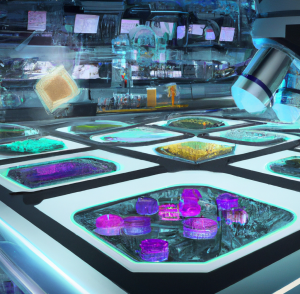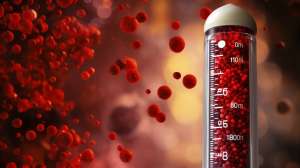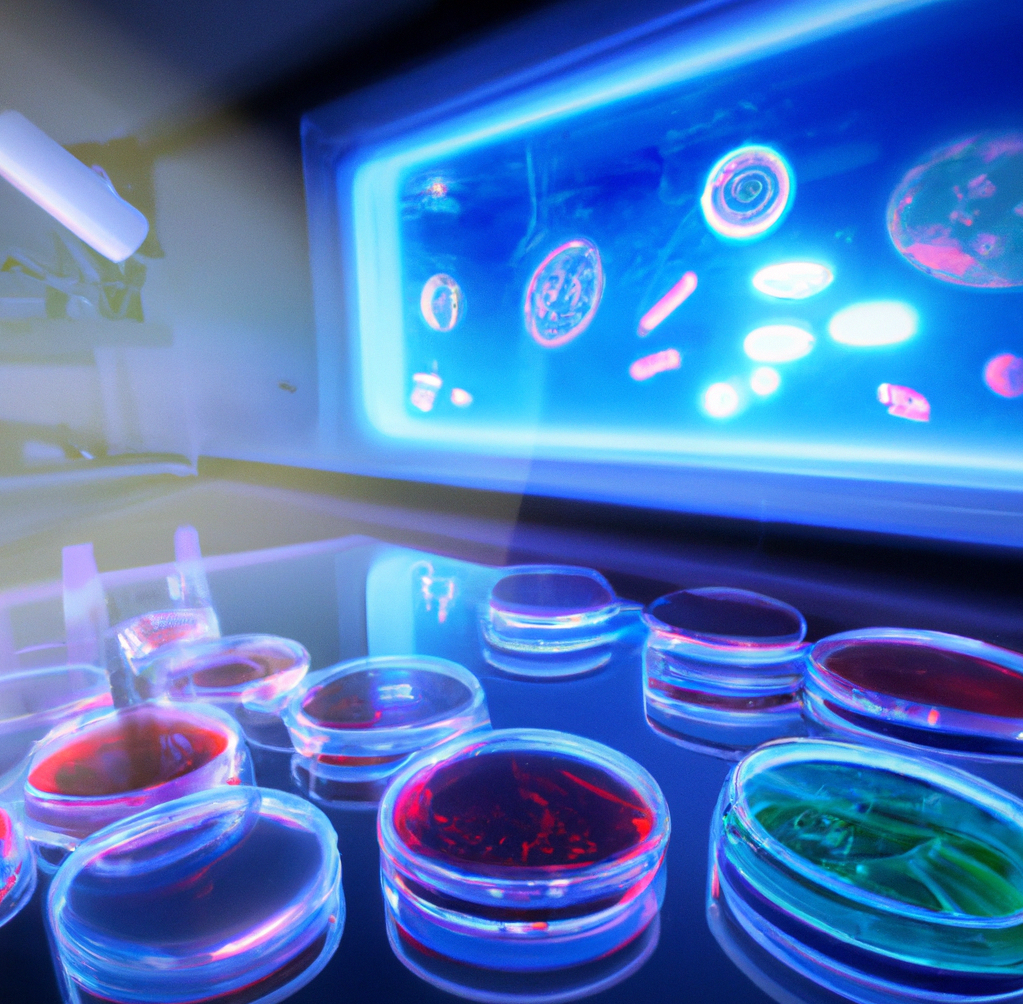Table of Contents
ToggleIntroduction
Step into the cutting-edge world of medical advancements where our own bodies lead the revolution!
Regenerative medicine isn’t just the buzzword of the day—it’s the beacon of hope, promising treatments that go beyond symptom management to actual healing.
At the heart of this evolution? Two standout stars: platelet-rich plasma (PRP) therapy and stem cell therapy.
We’re about to pull back the curtain on PRP therapy, unraveling its magic and mysteries. Hold on tight, because we’re diving deep into a world where our own blood and cells become the superheroes of healing!

Brief Overview of Regenerative Medicine
Regenerative medicine seeks to restore or replace damaged tissues and organs by utilizing the body’s own healing mechanisms.
Unlike traditional medical interventions that focus on managing symptoms, regenerative medicine aims to address the underlying cause of a condition by promoting tissue repair and regeneration.
This approach involves using biological materials, such as cells, growth factors, and scaffolds, to stimulate tissue healing and rejuvenation.
By harnessing the body’s natural regenerative potential, regenerative medicine offers promising alternatives for various conditions.

Importance of PRP and Stem Cell Therapy in Medical Treatments
PRP therapy and stem cell therapy have emerged as pivotal players in the realm of regenerative medicine.
Platelet-rich plasma (PRP) therapy involves using a concentrated solution of platelets obtained from a patient’s own blood.
Platelets play a crucial role in wound healing by releasing growth factors that promote tissue repair.
PRP therapy has gained popularity for its effectiveness in treating orthopedic conditions like osteoarthritis and tendon injuries.
In contrast, stem cell therapy utilizes stem cells obtained from different sources such as bone marrow, adipose tissue, or umbilical cord blood.
Stem cells possess unique properties that enable them to differentiate into various cell types, making them invaluable in repairing damaged tissues or providing support for organ function restoration.
Both PRP and stem cell therapy offer immense potential for addressing a wide range of medical conditions, improving patient outcomes, and reducing the need for more invasive or repetitive treatments.

Platelet-Rich Plasma (PRP) Therapy
Definition and Explanation of PRP:
Platelet-Rich Plasma (PRP) therapy is a cutting-edge medical treatment that utilizes the body’s own healing properties to promote tissue regeneration.
PRP, made from the patient’s blood, has concentrated platelets crucial for clotting and healing.
The platelets are extracted through a process called centrifugation, where blood is spun at high speeds to separate its components.
The resulting PRP solution is then injected back into the targeted area, delivering growth factors and cytokines that stimulate tissue repair.
How PRP is Prepared from Patient’s Blood:
The preparation of PRP begins by drawing a small amount of the patient’s blood, similar to getting a routine blood test.
Once the blood sample is obtained, it goes through a series of steps to concentrate the platelets.
First, the blood undergoes centrifugation in specialized equipment designed to separate its components based on density.
This process separates the platelet-rich plasma from other blood components such as red and white blood cells.
Components and Functions of Platelets in PRP:
Small cell fragments called platelets circulate in our bloodstream and play a vital role in promoting healing and tissue regeneration.
In addition to their well-known function in forming clots to prevent excessive bleeding, platelets release bioactive proteins called growth factors upon activation.
These growth factors are responsible for stimulating various cellular processes involved in tissue repair, such as cell proliferation, angiogenesis (formation of new blood vessels), and collagen synthesis.
Common Uses of PRP Therapy in Various Medical Fields:
PRP therapy has gained widespread recognition and is utilized in various medical fields for its therapeutic potential.
In orthopedics, doctors commonly use PRP injections to treat tendonitis, ligament injuries, and osteoarthritis.
Also, PRP has shown promising results in dermatology for skin rejuvenation, wound healing acceleration, and hair restoration treatments.
Additionally, researchers are exploring PRP as a potential supplement to boost bone growth and increase graft success rates during surgical procedures.
By harnessing the regenerative properties of platelets found in our own blood, PRP therapy offers a safe and effective treatment option with broad applications across diverse medical specialties.
Its unique ability to promote tissue repair makes it an attractive alternative or complementary approach to traditional treatment methods.
Stem Cell Therapy
Definition and Explanation of Stem Cells
These remarkable cells have the incredible ability to transform into different types of cells in our bodies.
Stem cells are undifferentiated, meaning they haven’t yet decided what they want to be when they grow up.
Just like a blank canvas waiting for an artist’s brushstroke, these cells can become muscle tissue, bone cells, blood cells, or even brain neurons.
They hold immense potential for repairing and regenerating damaged tissues and organs.
Different Types of Stem Cells:
We have three main contenders: embryonic stem cells (ESCs), adult stem cells (ASCs), and induced pluripotent stem cells (iPSCs).
ESCs come from early-stage embryos and possess the remarkable ability to differentiate into any cell type in the human body.
ASCs can be found in specific tissues throughout our bodies like bone marrow or adipose tissue (fat).
These ASCs may not have quite as much flexibility as ESCs but still pack a punch when it comes to regeneration.
IPSCs are created by reprogramming adult skin or blood cells back into a state where they resemble embryonic stem cells.
These iPSCs have similar capabilities as ESCs without the ethical concerns associated with using embryos.
Sources for Obtaining Stem Cells
If you’ve ever pondered the origins of stem cells, you’re not alone. These cellular wonders are derived from a multitude of sources, each unique in its own way.
- Bone Marrow: Often considered a primary source, stem cells can be extracted from the marrow within our hip bones. This process, although somewhat invasive, has been in practice for many years. Sometimes, when a patient’s own cells aren’t viable, matched donors can step in to provide this vital component.
- Adipose Tissue (Fat Cells): It might surprise you to learn that our body fat is more than just extra padding; it’s also a rich source of stem cells. Doctors can harvest these cells using procedures like liposuction and then use them in various treatments.
- Umbilical Cord: Post-childbirth, the umbilical cord — often discarded as medical waste — is actually a treasure trove of stem cells. These cells have the remarkable ability to develop into various cell types, making them a versatile source for research and therapy.
Methods for Isolating and Culturing Stem Cells
Isolation Methods:
Bone Marrow Aspiration: Surgeons harvest hematopoietic or mesenchymal stem cells from the bone marrow, usually taken from the iliac crest of the hip. This method is traditional and provides a rich source of stem cells.
Adipose Tissue Extraction: After performing liposuction, technicians isolate mesenchymal stem cells from the extracted fat tissue. This method taps into the abundant stem cells present in adipose tissue.
Cord Blood Collection: Right after birth, medical professionals collect hematopoietic stem cells from the umbilical cord blood. This non-invasive method offers a rich source of young and healthy stem cells.
Enzymatic Digestion: Scientists use specific enzymes to break down tissues, like the umbilical cord or placenta, to release the mesenchymal stem cells contained within. This approach ensures a higher yield of viable cells.
FACS (Fluorescence Activated Cell Sorting): This technique actively separates specific stem cells from a mixed cell population based on their unique surface markers. It provides a precise way to obtain a purified cell population.
MACS (Magnetic Activated Cell Sorting): In this method, researchers label cells with magnetic beads and then separate them using a magnetic column. It’s an efficient way to segregate specific cells from a mixed population.
Apheresis: Medical teams use this technique to draw out and collect hematopoietic stem cells from the bloodstream after stimulating their release from the bone marrow. It’s a less invasive alternative to bone marrow aspiration.

Culturing Methods:
Feeder Layer Culture: Researchers place stem cells on a layer of supportive cells, providing them essential growth factors for survival and growth. This traditional method ensures that the stem cells maintain their undifferentiated state.
Feeder-free Culture: Scientists culture stem cells directly on a supportive matrix in a defined medium, eliminating the need for feeder cells. This method reduces potential cross-species contamination.
3D Culture/Spheroid Culture: In this approach, scientists grow stem cells in three-dimensional spheroids, which mimic tissue-like structures and improve cell-cell interactions. It offers a more natural environment for the cells and is often more representative of in vivo conditions.
Hypoxic Culture: Researchers replicate the natural, low-oxygen environment of stem cells by culturing them under hypoxic conditions. This environment often enhances stem cell proliferation and maintains their pluripotency.
Bioreactor Culture: In this scalable method, scientists cultivate stem cells in dynamic conditions using bioreactors, allowing for large-scale stem cell expansion. It’s particularly useful for industrial applications and therapeutic uses.
Comparing PRP and Stem Cell Therapy
PRP Therapy at the Cellular Level:
Platelet Activation: When PRP is injected into the target area, the platelets present in the PRP get activated. This activation results in the release of numerous growth factors contained within the platelets’ alpha granules.
Release of Growth Factors: Growth factors such as platelet-derived growth factor (PDGF), vascular endothelial growth factor (VEGF), and transforming growth factor-beta (TGF-β) are released from the activated platelets.
Cellular Signaling: These growth factors bind to specific receptors on the surface of local cells, initiating a cascade of intracellular signaling pathways.
Stem Cell Therapy at the Cellular Level:
Stem Cell Potency: Stem cells have the unique ability to differentiate into specific cell types. Depending on the signals they receive from the surrounding environment, they can turn into muscle cells, bone cells, cartilage cells, or other cell types.
Homing and Migration: Stem cells, when introduced into the body, can sense chemotactic factors released from damaged tissues and migrate towards those sites.
Cell Differentiation and Integration: Depending on the injury and local cellular environment, the stem cells can differentiate and integrate into the existing tissue, replacing the damaged or lost cells.

A Word from HealthyVibe
Wrapping things up, PRP and stem cell therapies are blazing trails in regenerative medicine, leveraging our body’s own healing powers.
As we push the boundaries and explore this field, we’re on the brink of discovering game-changing treatments.
But remember, always take the proactive step of consulting experts before diving into any regenerative procedure.
With ongoing advancements, we can expect even better techniques and outcomes, cementing these therapies as cornerstone tools in today’s medical world.
FAQ
What is regenerative medicine?
Regenerative medicine revolutionizes medical treatments by aiming to restore or replace damaged tissues and organs.
Instead of just managing symptoms, this approach promotes tissue repair and regeneration using biological materials, including cells, growth factors, and scaffolds.
How do PRP and stem cell therapies fit into regenerative medicine?
Platelet-rich plasma (PRP) therapy and stem cell therapy are two groundbreaking treatments in regenerative medicine. PRP therapy uses a concentrated solution of platelets from a patient’s own blood, releasing growth factors to stimulate tissue repair.
Meanwhile, stem cell therapy employs stem cells from sources like bone marrow, adipose tissue, or umbilical cord blood, which can differentiate into various cell types to repair damaged tissues.
What makes PRP therapy unique and how do doctors prepare it?
PRP therapy stands out because it capitalizes on the body’s natural healing properties. Doctors prepare PRP by drawing a patient’s blood, then using centrifugation to concentrate the platelets.
We inject the PRP solution, full of growth factors, into the damaged area to boost tissue repair.
What are stem cells, and why are they so significant in therapy?
Stem cells, the superheroes of regenerative medicine, possess the unique ability to transform into different cell types in our bodies. They can morph into muscle tissue, bone cells, blood cells, or brain neurons.
Therapies use various stem cells, including embryonic stem cells (ESCs), adult stem cells (ASCs), and induced pluripotent stem cells (iPSCs), harvested from different sources like bone marrow, adipose tissue, and umbilical cord.
How do PRP and stem cell therapies compare in terms of mechanism, efficacy, safety, and cost?
Both PRP and stem cell therapies offer innovative ways to promote healing. PRP uses platelets to release growth factors, accelerating tissue repair, while stem cells differentiate into needed cell types to replace damaged cells.
Research has shown both therapies to be effective in various applications, although more studies are necessary.











